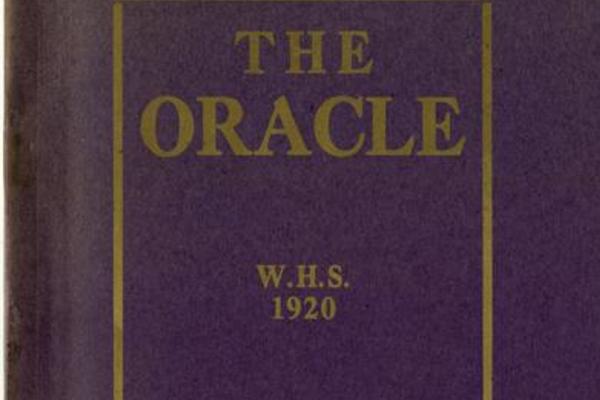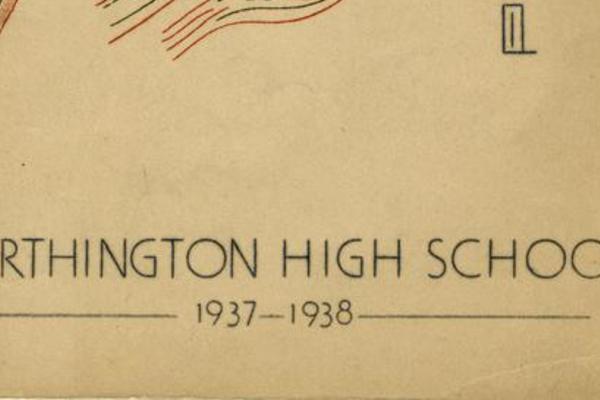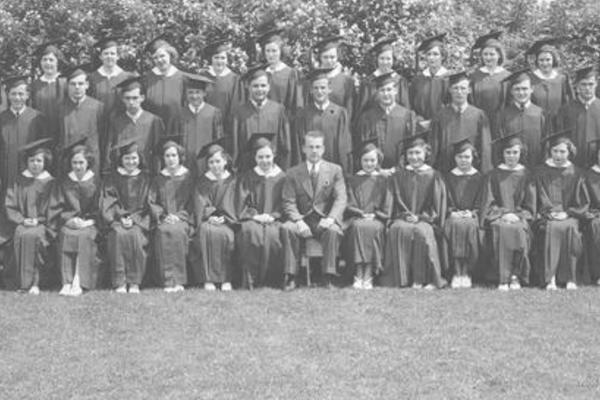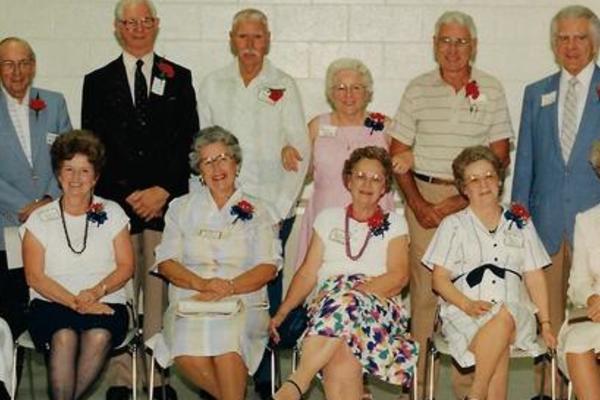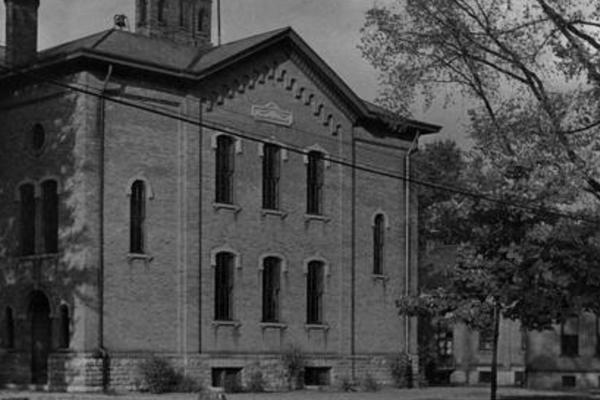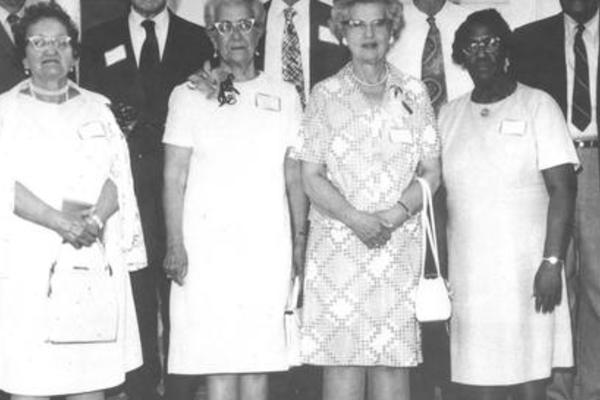Thursday,
September 22, 2022
11:41am
October's arrival means the new school year is in full swing, bringing with it a new slate of social and academic activities. Recent students of Worthington Schools may feel busier than ever, but their predecessors were active, too! This month’s exhibit takes a closer look at high school life, via first editions of Worthington High School’s (WHS) student handbook, yearbook and student magazine.
Those enrolling at WHS partway into the school year, or as freshmen, might especially have wanted a copy of Cardinal Notes, the school's student handbook, to help get their bearings and set themselves up for success. (Fun fact: If prestige wasn't enough, WHS valedictorians also received a one-year subscription to Reader’s Digest!) The first edition of the handbook, published in 1946, strikes a congenial tone while offering a snapshot of scholarship opportunities, elective courses, student organizations, annual events and even home addresses for nearly every faculty and staff member. Students looking to join an athletic team or student publication, or to participate fully in school songs and cheers (p. 22), could also find guidance. School policies are explained in detail, with some-- no use of the school’s telephone "except in cases of urgent necessity" and "no pupils infected with any contagious disease permitted" (p. 31)-- presenting a bit more strictly than modern iterations. There’s such a variety of information that the index at the end of the handbook is a relief to find!
The concept of school pride is implied and supported within the student handbook, yet the first edition of the WHS yearbook, known as The Oracle at its inception in 1920, and as The Cardinal by the mid-1940s, takes this matter a step further. "School spirit" is explicitly defined and actively encouraged in an editorial (p. 20 in the book, p. 24 in the book viewer) reminding students it is achieved "…in doing everything to uphold and better [the school's] standards," not only through "athletics alone, but also… higher educational standards." Students demonstrate throughout the rest of The Oracle’s editorial pages their buy-in to this ideal, gamely striving to plan the best school events, win the inter-class basketball tournament and partake in the most adventurous and jovial bonding experiences when outside school grounds. One such gathering, a wiener roast held at a senior class student’s home in early October, was so full of "pep" (p. 24 in the book, p. 28 in the book viewer) and a "spirit of congeniality" it is credited with inspiring two entirely new events for the 1920-21 school year: the senior class dance and the senior box social, an invitation-only auction for couples.
The Oracle shows cheerful competition between alumni and then-current students, too. Nelson H. Budd, class of ’16, wrote in the yearbook's Alumni essay (p. 28 in the book, p. 32 in the book viewer) that "to you present high-schoolers we'll reluctantly admit a superiority as to housing quarters"-- the new high school building had opened late in the 1915-16 school year-- "but we’ll never admit your superiority in intellect or athletics, or teacher." Budd predicts the class of '20 will inevitably "…not concede anything to your undergrads, either," yet invites all WHS students to continue increasing their engagement and comradery with alumni and share in their "wonderful bond of union—love for good old W.H.S." at future football games and dances. The article ends with a roll call of alumni who had moved from Ohio, taken up farming and other trades, joined the clergy or military or who had since passed away. Current students couldn’t wait to boost their own accolades and penned a Class Prophecy essay (pp. 40-43 in the book, 44-47 in the book viewer) that peers through an imaginary crystal ball to seniors’ post-graduation activities, whereabouts and accomplishments. Race car drivers, movie stars, aviatrixes and famous novelists are foretold. The Oracle gives the sense that alumni had bright futures ahead and fond memories of their school days to sustain them along the way.
WHS students found an expanded outlet for self-expression in the Cardinal magazine, which they first produced in November 1937 as part of a new curriculum designed to teach bookkeeping, typewriting and other clerical skills. The magazine includes little evidence of the societal upheavals that occurred during the 1920s and '30s, though global news headlines (p. 7 in the book viewer) suggested looming geopolitical conflict. Otherwise, students' attention was largely focused on activities and concerns similar to those described in the 1920 yearbook, with some extra cultural context, humor and gossip in the mix. Reviews of popular media (pp. 26-28 in the book viewer) reflected society's growing fascination with the movies and radio, and lists of must-read novels and random trivia illustrated the tastes and curiosities of the time. The WHS football team was reported to have just finished a challenging season (p. 21 in the book viewer), notching only two victories despite their hard work and the "definite incentive" of new sweaters to sport on-field. The sophomore class nevertheless managed successful hot dog sales at the games, their class treasury "piling up nicely" (p. 24 in the book viewer) and the team's fortunes would reverse during the following season, when they won the county championship.
For more stories of student life in Worthington, browse subsequent editions of the publications mentioned here, along with other exhibits and records, on Worthington Memory.


